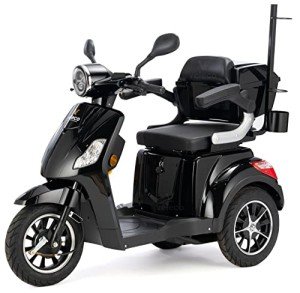Mobility Scooters: A Comprehensive Guide
Mobility scooters have become a vital mode of transportation for many people dealing with mobility difficulties. This short article explores the numerous facets of mobility scooters, including their types, advantages, functions, and a guide for potential buyers.
Understanding Mobility Scooters
Mobility scooters are electrically powered gadgets developed for individuals with minimal mobility. They offer a method of transportation for individuals who may have difficulty strolling but still wish to retain their self-reliance. They come in numerous designs and functions to cater to a large range of requirements.
Types of Mobility Scooters
Mobility scooters can generally be classified into 3 primary types:
| Type | Description | Best For |
|---|---|---|
| Compact Scooters | These are small and lightweight, perfect for indoors and short trips. | Users with minimal storage area or those who travel typically. |
| Mid-size Scooters | A balance in between portability and stability, suitable for both indoor and outside usage. | Those who need to cover a variety of terrains. |
| Durable Scooters | Big and robust, created for rugged outside use and much heavier individuals. | Users needing additional weight capacity or going off-road. |
Secret Features of Mobility Scooters
The option of mobility scooter frequently depends on the features that line up with individual requirements. Here are some of the key functions to consider:
- Weight Capacity: Mobility scooters come with different weight limitations. It is essential to choose a scooter that can effectively support the user's weight.
- Variety: The range a scooter can travel on a single charge varies. Depending upon user needs, one may go with scooters with a variety of up to 40 miles.
- Speed: Most mobility scooters can reach speeds between 4 to 8 miles per hour. Consider what speed is comfy and safe for the designated environment.
- Turning Radius: A compact turning radius is essential for indoor usage, permitting for easier navigation in tight areas.
- Battery Type: The type of batteries utilized can impact the scooter's performance. Lead-acid and lithium-ion batteries are the most typical.
Advantages of Using Mobility Scooters
The advantages of mobility scooters extend beyond just transportation. Some key benefits consist of:
- Independence: Users can navigate their environment without relying on caregivers, promoting independence and self-confidence.
- Health Benefits: Using a scooter can motivate outside activity, causing physical and mental health improvements by minimizing feelings of isolation.
- Convenience: Scooters can quickly be operated in various environments, whether indoors, in shopping malls, or outdoors.
Essential Considerations When Buying a Mobility Scooter
When buying a mobility scooter, numerous factors to consider can assist guarantee that you choose the right design:
Assess Individual Needs:
- Mobility level: Consider just how much assistance the person will need.
- Series of use: Determine where the scooter will mainly be utilized (inside your home, outdoors, on rough surfaces, and so on).
Test Drive:
- Always test drive several designs to find an appropriate fit. Focus on convenience, ease of steering, and the scooter's responsiveness.
Evaluation Safety Features:
- Look for scooters with adequate security functions like lights, indications, and anti-tip styles.
Examine Warranty and Service Options:
- A trusted warranty and available service choices are important for long-lasting use.
Frequently Asked Questions about Mobility Scooters
1. How fast do mobility scooters go?Mobility scooters typically have speeds varying from 4 to 8 mph, with many developed for safety rather than high-speed travel. 2. Exist weight constraints on mobility scooters?Yes, mobility
scooters feature particular weight limitations, typically varying from
250 pounds to over 500 pounds, depending on the model. 3. read here be utilized indoors?Certain models, especially compact scooters, are particularly created for
indoor usage and are simpler to maneuver in tight areas. 4. How typically do the batteries require to be replaced?Battery life can vary based on use, but usually, with correct care, batteries might last in between 1 to 3 years before needing replacement
. 5. Are mobility scooters covered by insurance?Coverage can vary, however some insurance coverage plans, consisting of Medicare and Medicaid, may cover part of the expense. It's suggested to contact private insurance suppliers. Mobility scooters serve as a
valuable tool for many individuals, enabling them to keep
their liberty and self-reliance. By comprehending the different types and functions of mobility scooters, individuals can make educated decisions customized to their specific requirements.
Whether used for errands, socializing, or leisurely activities, mobility scooters can improve the quality of life for those with mobility restrictions. Purchasing a mobility scooter is a decision that can substantially impact a person's every day life. Therefore, individuals need to thoroughly evaluate their options and choose a model that best lines up with their way of life and mobility requirements
.

